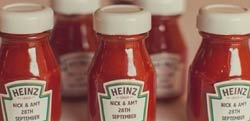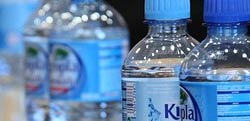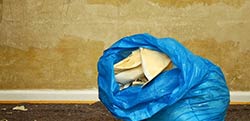
If you’re interested in living a cleaner, greener, more environmentally conscious lifestyle to the greatest extent possible, then you’re in excellent company. Millions of people are getting on board with the ongoing campaign to reduce carbon footprints worldwide and cut down on waste in as many ways as possible. Naturally, reusing perfectly good containers is a huge part of that effort.
However, reports that it isn’t safe to reuse plastic drinking bottles have people questioning whether or not it’s safe to reuse plastic containers of any kind under any circumstances. Let’s take a closer look at plastic container reuse today, and get to the bottom of when and where it’s safe to reuse a given option. Spoiler Alert: It’s not all plastics that are potentially hazardous. Telling the difference is as simple as getting in the know as to the different types of plastics out there on the market today. Here we’ll examine the truth behind the rumors about plastic, and discuss how to tell the difference between good and bad options.

The reports of plastic bottles being unsafe are rooted in recent revelations that chemicals present in a particular plastic called Lexan can be toxic. Also known as “Plastic #7”, Lexan has been linked to multiple ailments by multiple studies. These ailments include, but are not necessarily limited to, breast cancer, uterine cancer, miscarriage, birth defects, hormonal imbalance, and decreased levels of testosterone in both men and women. The reports are even bleaker when it comes to the potential havoc that can be wrought on a child’s developing system.
The issues with Lexan are caused by a compound called Bisphenol A. Also known as BPA for short, Bisphenol A is a synthetic chemical that can interfere with the hormonal messaging system the body relies on for many of its normal, healthy functions. It is thought that reusing bottles and plastic containers that contain BPA can result in superficial cracks, blemishes, and dings that can release the chemical into the liquids or foods stored in said container.
BPA is most often found in a variety of commonly used plastics. These include plastic reusable water bottles of the type used by hikers, fitness enthusiasts, and runners, to stay hydrated while exercising. They also include quite a lot of the baby bottles and sippy cups on the market. While experts do agree that BPA is toxic and potentially problematic, it’s important to note that the amount of BPA likely to leach into drinks, water, or food is most likely too small to cause major problems. That said, if you’ve been using plastics that contain BPA, you’re most likely fine. There is, however, some concern over the possible effects of cumulative exposure sustained over time, so you should discontinue use in favor of alternatives immediately.

In light of studies conducted by such trustworthy entities as the Berkeley Ecology Center and the Environment California Research & Policy Center, it’s not terribly difficult to understand why some people want nothing to do with any plastics whatsoever. (Better safe than sorry, right?) However, it’s important to note that it isn’t all plastics that pose a potential risk.
In addition to Plastic #7, consumers are advised to avoid excessive reuse of anything made from Plastic #1 as well. (Plastic #1 is also called polyethylene terephthalate, PET, or PETE.) PET plastic is the type of plastic used to make the great majority of disposable plastic juice, water, and soda bottles. In most cases, one or two reuses is considered to be safe. However, when such bottles are old or are in less than pristine condition, they are thought to leach DEHP – another potentially harmful chemical compound that has been linked to certain cancers.
Another plastic to avoid would be Plastic #3 (also known as polyvinyl chloride or PVC). PVC can leach additional chemicals that can interfere with healthy hormonal function, as well as release certain carcinogens into the atmosphere should they be incinerated, as they would be if added to many landfills. Plastic #6 (polystyrene or PS) can also potentially leach styrene into foods and drinks. Styrene has also been found to have links to many cancers.
So Which Types of Plastics Are Safe to Reuse?
As touched on above, the most reliable way to make sure that you’re reusing only plastics that are safe for the purpose is to pay attention to the numbers and codes attached to the items in question. Make a note of the numbers listed above, as those are the ones scientific studies have found to be potentially harmful.
On the other hand, the following plastics have not been found to have any major problems with leaching carcinogenic or otherwise harmful chemicals. They are considered by the American Chemistry Council to be safe for reuse, once properly washed using hot, soapy water, just as you would use to clean the rest of your dishes or containers.

PET
As touched on above, you can reuse PET containers on a very limited basis. PET containers are probably the most common type of plastic container out there on the market today. Example products that come in PET containers include ketchup, bottled water, juice, salad dressing, peanut butter, and soft drinks. However, it’s important to note that most manufacturers create these bottles for one-time use. That said, health authorities recommend reusing each bottle no more than once, ideally.
Never expose PET bottles to hot temperatures, as this can trigger the leaching effect that is so potentially worrisome. Also avoid reusing or drinking from PET bottles/containers that appear compromised or damaged in any way.

HDPE #2
HDPE (short for high-density polyethylene) belongs to a class of plastics that are known for being high in density. They are typically opaque instead of clear and are most commonly used to contain products like yogurt, margarine, milk, certain juices, and laundry detergents.
The American Chemistry Council has determined that it is safe to reuse HDPE bottles and containers once you have finished off the original contents. No proof has been found that this type of plastic leaches any type of harmful or carcinogenic chemicals or substances.

LDPE #4
Also known as low-density polyethylene, LDPE is most commonly found in products like trash bags, disposable grocery store bags, and plastic wrap generally meant for food storage. It is considered safe to reuse within reason. Before deciding to reuse something made of LDPE, consumers are advised to carefully consider the original use of the item.
It’s also important to note that this type of plastic is lightweight and incredibly thin, in comparison to other types of plastic. That said, it’s important to avoid exposing it to high temperatures. If it melts or burns, it can emit chemicals that are potentially toxic, so be careful – especially in regards to microwave use. Products like Saran Wrap should always be removed from food containers before microwaving or otherwise reheating.

PP#5
Those worried about the reports of certain reusable drinking bottles or baby items not being safe should keep an eye out for PP (polypropylene) as an alternative. Current research shows no evidence that PP has the same issue with leaching toxic chemicals that Plastic #7 has. In addition to baby bottles and sports bottles, PP is commonly used to make products like drinking straws, yogurt, deli soup containers, many toys, syrup, and certain margarine containers.
That said, the most important thing to remember when determining which plastic containers are and are not safe to reuse is the coding used to inform the consumer as to the type of plastic present. Get familiar with the different varieties out there. Make a mini-cheat sheet you can keep in your wallet, purse, or phone, in case you forget. Stick to the safe options, avoid the potentially toxic options, and always be sure to thoroughly wash any plastic container before reusing.

Of course, many consumers are concerned with whether or not products like Tupperware that are designed for food storage are safe to use. The short answer is “yes.” The vast majority of food storage products manufactured by Tupperware, Ziploc, Saran, Glad, and Hefty are made of either LDPE or PP plastics. Therefore, they have been deemed perfectly safe for use by public health authorities.
Concerned consumers are, however, advised to continue to study and pay attention to the numbers and codes attached to any plastic product. Some products produced by popular brands may pose a small risk, as they are polycarbonate-based. Example product lines include certain micro-steamers on the market, as well as certain table collections. Just get into the habit knowing your plastics, and you’ll be just fine.
Not sure you can keep everything straight … or simply don’t want to attempt it? You can always forgo plastics altogether, if you prefer. Glass alternatives like Pyrex are always safe, as they do not contain any sort of chemicals that can leach their way into your food and drinks. When it comes to water bottles, aluminum is a hardy and safe alternative to plastic or PVC.

Here in the age of environmental consciousness, more and more companies are making the switch to reusable packaging for shipping and storage purposes, and with good reason. Reusable containers aren’t just better for the environment. They’re more cost-effective than high-waste options like disposable cardboard boxes, when the costs are calculated over time. They’re also far more space effective. Since they’re stronger, they allow for containers to be stacked on top of one another, letting merchants make the most of warehouse storage space and transportation space within trucks or cargo bays.
They are also safe for perpetual and indefinite reuse, as they are made from plastics that are considered perfectly safe to reuse. This means that if your company relies on reusable plastic containers to ship or store food products or other consumables, you can rest easy that you’re not tainting your products or potentially harming your customers in any way.However, as with containers meant for home food storage, there are plenty of alternatives available if for any reason you simply aren’t comfortable with plastics. Reusable industrial containers can just as easily be made out of wood or metal. They also come in a variety of different shapes, sizes, and styles so you’ll never wind up stuck using a container that’s anything less than perfectly functional.

How Should Used or Unwanted Plastic Containers Be Disposed Of?
In light of the potential toxins that many plastic containers can release if burned or melted, environmentally conscious consumers are advised not to dispose of any sort of plastic with the rest of their household garbage. Along with glass, paper, metal, and other such substances, plastic should always be recycled according to proper methods.If your neighborhood’s waste disposal company has provided your household or business with dedicated containers for recyclables, definitely use those to dispose of your plastics. In the event you haven’t been provided with specific containers for this purpose, you are urged to take it upon yourself to transport your unwanted plastics and other recyclables to an appropriate facility. You’ll be doing the earth and all the living things that call it home a huge service!
If your business is one of the many that relies on reusable plastic containers for shipping and storage, as detailed above, you should consider contacting a company that specializes in recycling, refurbishing, and reselling such containers. The chances are excellent that, once they’ve ceased to be useful to you, the items are still in excellent enough working condition to be of great use to another company. Even if they’re a little worse for wear (or even broken), it’s more than likely that, with a little refurbishment, they could be restored to full working order.
Companies that specialize in reusable containers are great resources for obtaining new containers. Used options are every bit as strong and trustworthy as brand new alternatives. Plus, you can usually get them at a discount, leaving you with that much more room in your budget to invest in other areas. Explore the possibilities today!